The Optimization of Mechanochemical Processes toward Functional Nanocomposite Materials
Abstract
:1. Introduction
2. Diversity of Mechanisms in Mechanochemistry
3. Nanoglassy and Nanocrystalline States of Complex Oxides
4. Spinel and Perovskite Compounds with Varying Anti-Site Disorder
5. Stabilized Molecular Dispersion in Pharmaceutic Technology
6. Involvement of Liquids and Auto-Liquefaction
7. Apparent Stabilization of Mechanochemical Products
8. Remarks for the Process Optimization
- Size-dependent properties
- 2.
- Precision control of short-range disorder
- 3.
- Sustainability and affordability
9. Concluding Remarks and Outlook
Funding
Acknowledgments
Conflicts of Interest
References
- Sepelak, V.; Duvel, A.; Wilkening, M.; Becker, K.D.; Heitjans, P. Mechanochemical reactions and syntheses of oxides. Chem. Soc. Rev. 2013, 42, 7507. [Google Scholar] [CrossRef] [PubMed]
- Boldyreva, E. Mechanochemistry of inorganic and organic systems: What is similar, what is different? Chem. Soc. Rev. 2013, 42, 7719. [Google Scholar] [CrossRef]
- Balaz, P.; Achimovicova, M.; Balaz, M.; Billik, P.; Cherkezova-Zheleva, Z.; Criado, J.M.; Delogu, F.; Dutkova, E.; Gaffet, E.; Gotor, F.J.; et al. Hallmarks of mechanochemistry: From nanoparticles to technology. Chem. Soc. Rev. 2013, 42, 7571. [Google Scholar] [CrossRef]
- Pagola, S. Outstanding Advantages, Current Drawbacks, and Significant Recent Developments in Mechanochemistry: A Perspective View. Crystals 2023, 13, 124. [Google Scholar] [CrossRef]
- Michalchuk, A.A.L.; Boldyreva, E.V.; Belenguer, A.M.; Emmerling, F.; Boldyrev, V.V. Tribochemistry, Mechanical Alloying, Mechanochemistry: What is in a Name? Front. Chem. 2021, 9, 685789. [Google Scholar] [CrossRef]
- Balaz, M.; Balema, V.; Blair, R.G.; Boldyreva, E.; Bolm, C.; Braunschweig, A.B.; Carpick, R.W.; Craig, S.L.; Emmerling, F.; Ewen, J.P.; et al. Shear processes and polymer mechanochemistry: General discussion. Faraday Discuss. 2023, 241, 466. [Google Scholar] [CrossRef]
- Pradipta, M.F.; Watanabe, H.; Senna, M. Semiempirical computation of the solid phase Diels–Alder reaction between anthracene derivatives and p-benzoquinone via molecular distortion. Solid State Ionics 2004, 172, 169. [Google Scholar] [CrossRef]
- Ariga, K.; Li, J.; Fei, J.; Ji, Q.; Hill, J.P. Nanoarchitectonics for Dynamic Functional Materials from Atomic-/Molecular-Level Manipulation to Macroscopic Action. Adv. Mater. 2016, 28, 1251. [Google Scholar] [CrossRef]
- Soare, V.; Florea, I.; Florea, R.M.; Baltatescu, O.; Chelariu, R.; Carcea, I. High entropy alloys. J. Optoelectornics Adv. Mater. 2013, 15, 761. [Google Scholar]
- Xiang, H.; Xing, Y.; Dai, F.-z.; Wang, H.; Su, L.; Miao, L.; Zhang, G.; Wang, Y.; Qi, X.; Yao, L.; et al. High-entropy ceramics: Present status, challenges, and a look forward. J. Adv. Ceram. 2021, 10, 385. [Google Scholar] [CrossRef]
- Fu, M.; Ma, X.; Zhao, K.; Li, X.; Su, D. High-entropy materials for energy-related applications. Science 2021, 24, 102177. [Google Scholar] [CrossRef] [PubMed]
- Saha-Dasgupta, T. Double perovskites with 3d and 4d/5d transition metals: Compounds with promises. Mater. Res. Express 2020, 7, 014003. [Google Scholar] [CrossRef]
- Garcia-Garcia, F.J.; Sayagues, M.J.; Gotor, F.J. A Novel, Simple and Highly Efficient Route to Obtain PrBaMn(2)O(5+delta) Double Perovskite: Mechanochemical Synthesis. Nanomaterials 2021, 11, 380. [Google Scholar] [CrossRef]
- Ahn, C.W.; Jo, J.H.; Choi, J.S.; Hwang, Y.H.; Kim, I.W.; Kim, T.H. Heteroanionic Lead-Free Double-Perovskite Halides for Bandgap Engineering. Adv. Eng. Mater. 2022, 25, 2201119. [Google Scholar] [CrossRef]
- Gangu, K.K.; Maddila, S.; Mukkamala, S.B.; Jonnalagadda, S.B. A review on contemporary Metal–Organic Framework materials. Inorg. Chim. Acta 2016, 446, 61. [Google Scholar] [CrossRef]
- Sun, Y.; Jia, X.; Huang, H.; Guo, X.; Qiao, Z.; Zhong, C. Solvent-free mechanochemical route for the construction of ionic liquid and mixed-metal MOF composites for synergistic CO2 fixation. J. Mater. Chem. A 2020, 8, 3180. [Google Scholar] [CrossRef]
- Friščić, T. New opportunities for materials synthesis using mechanochemistry. J. Mater. Chem. 2010, 20, 7599. [Google Scholar] [CrossRef]
- Al Amery, N.; Abid, H.R.; Al-Saadi, S.; Wang, S.; Liu, S. Facile directions for synthesis, modification and activation of MOFs. Mater. Today Chem. 2020, 17, 100343. [Google Scholar] [CrossRef]
- Karadeniz, B.; Zilic, D.; Huskic, I.; Germann, L.S.; Fidelli, A.M.; Muratovic, S.; Loncaric, I.; Etter, M.; Dinnebier, R.E.; Barisic, D.; et al. Controlling the Polymorphism and Topology Transformation in Porphyrinic Zirconium Metal-Organic Frameworks via Mechanochemistry. J. Am. Chem. Soc. 2019, 141, 19214. [Google Scholar] [CrossRef]
- Tothova, E.; Duvel, A.; Witte, R.; Brand, R.A.; Sarkar, A.; Kruk, R.; Senna, M.; Da Silva, K.L.; Menzel, D.; Girman, V.; et al. A Unique Mechanochemical Redox Reaction Yielding Nanostructured Double Perovskite Sr2FeMoO6 With an Extraordinarily High Degree of Anti-Site Disorder. Front. Chem. 2022, 10, 846910. [Google Scholar] [CrossRef]
- Li, Y.-F.; Hou, Y.-J.; Wang, J.-F. Anti-site Defect Versus Grain Boundary Competitions in Magnetoresistance Behavior of Sr2FeMoO6 Double Perovskite. J. Supercond. Nov. Magn. 2021, 34, 2397. [Google Scholar] [CrossRef]
- Matsumoto, K.; Sajna, K.V.; Satoh, Y.; Sato, K.; Shimada, S. By-Product-Free Siloxane-Bond Formation and Programmed One-Pot Oligosiloxane Synthesis. Angew. Chem. Int. Ed. Engl. 2017, 56, 3168. [Google Scholar] [CrossRef]
- Zhang, S.; Han, L.; Bai, H.; Li, C.; Wang, X.; Yang, Z.; Zai, M.; Ma, H.; Li, Y. Introducing Mechanochemistry into Rubber Processing: Green-Functionalized Cross-Linking Network of Butadiene Elastomer. ACS Sustain. Chem. Eng. 2021, 9, 8053. [Google Scholar] [CrossRef]
- James, S.L.; Adams, C.J.; Bolm, C.; Braga, D.; Collier, P.; Friscic, T.; Grepioni, F.; Harris, K.D.; Hyett, G.; Jones, W.; et al. Mechanochemistry: Opportunities for new and cleaner synthesis. Chem. Soc. Rev. 2012, 41, 413. [Google Scholar] [CrossRef] [PubMed]
- Obst, M.; König, B. Organic Synthesis without Conventional Solvents. Eur. J. Org. Chem. 2018, 2018, 4213. [Google Scholar] [CrossRef]
- Pankrushina, N.A.; Lomovsky, O.I.; Shakhtschneider, T.P. Physical Activation of Extraction and Organic Synthesis Processes. Chem. Sustain. Dev. 2019, 27, 704. [Google Scholar]
- Bandichhor, R.B.; Diorazio, L.; Dunn, P.; Fraunhoffer, K.; Gallou, F.; Hayler, J.; Hickey, M.; Hinkley, B.; Humphreys, L. Green Chemistry Articles of Interest to the Pharmaceut. Org. Prog. Res. Dev. 2010, 14, 19. [Google Scholar]
- Winkler, M.; Lunkenheimer, P.; Loidl, A.; Park, S.H.; Röska, B.; Hoelzel, M. Charge transport by global protonic conductivity and relaxational dynamics over hydrogen bonds in Fe2+Fe3+3.2(Mn2+,Zn)0.8(PO4)3(OH)4.2(HOH)0.8. Solid State Ionics 2020, 347, 115240. [Google Scholar] [CrossRef]
- Mandal, P.R.; Nath, T.K. Oxygen-vacancy and charge hopping related dielectric relaxation and conduction process in orthorhombic Gd doped YFe0.6Mn0.4O3 multiferroics. J. Alloys Compd. 2015, 628, 379. [Google Scholar] [CrossRef]
- Baghel, S.; Cathcart, H.; O’Reilly, N.J. Polymeric Amorphous Solid Dispersions: A Review of Amorphization, Crystallization, Stabilization, Solid-State Characterization, and Aqueous Solubilization of Biopharmaceutical Classification System Class II Drugs. J. Pharm. Sci. 2016, 105, 2527. [Google Scholar] [CrossRef]
- Rumondor, A.C.F.; Dhareshwar, S.S.; Kesisoglou, F. Amorphous Solid Dispersions or Prodrugs: Complementary Strategies to Increase Drug Absorption. J. Pharm. Sci. 2016, 105, 2498. [Google Scholar] [CrossRef] [PubMed]
- Andrade, E.N.D.C.; Randall, R.F.Y. The Rehbinder Effect. Nature 1949, 4183, 1127. [Google Scholar] [CrossRef]
- Pazesh, S.; Grasjo, J.; Berggren, J.; Alderborn, G. Comminution-amorphisation relationships during ball milling of lactose at different milling conditions. Int. J. Pharm. 2017, 528, 215. [Google Scholar] [CrossRef] [PubMed]
- Shpotyuk, O.; Bujňáková, Z.L.; Baláž, P.; Shpotyuk, Y.; Demchenko, P.; Balitska, V. Impact of grinding media on high-energy ball milling-driven amorphization in multiparticulate As4S4/ZnS/Fe3O4 nanocomposites. Adv. Powder Technol. 2020, 31, 3610. [Google Scholar] [CrossRef]
- Duda, F.P.; Ciarbonetti, A.; Sánchez, P.J.; Huespe, A.E. A phase-field/gradient damage model for brittle fracture in elastic–plastic solids, Int. J. Plast. 2015, 65, 269. [Google Scholar] [CrossRef]
- Rajagopal, K.R.; Srinivasa, A.R. On the thermomechanics of materials that have multiple natural configurations Part I: Viscoelasticity and classical plasticity. Zangewandte Math. Phys. 2004, 55, 861. [Google Scholar] [CrossRef]
- Avvakumov, E.; Senna, M.; Kosova, N. (Eds.) Softmechanochemical_Synthesis; Kluwer Academic: Norwell, MA, USA, 2001. [Google Scholar]
- Suslick, K.S. Mechanochemistry and sonochemistry: Concluding remarks. Faraday Discuss. 2014, 170, 411. [Google Scholar] [CrossRef]
- Hernández, J.G.; Halasz, I.; Crawford, D.E.; Krupicka, M.; Baláž, M.; André, V.; Vella-Zarb, L.; Niidu, A.; García, F.; Maini, L.; et al. European Research in Focus: Mechanochemistry for Sustainable Industry (COST Action MechSustInd). Eur. J. Org. Chem. 2020, 2020, 8. [Google Scholar] [CrossRef]
- Gomollon-Bel, F. Mechanochemists Want to Shake up Industrial Chemistry. ACS Cent. Sci. 2022, 8, 1474. [Google Scholar] [CrossRef]
- Colacino, E.; Isoni, V.; Crawford, D.; García, F. Upscaling Mechanochemistry: Challenges and Opportunities for Sustainable Industry. Trends Chem. 2021, 3, 335. [Google Scholar] [CrossRef]
- Rubin Pedrazzo, A.; Cecone, C.; Trotta, F.; Zanetti, M. Mechanosynthesis of β-Cyclodextrin Polymers Based on Natural Deep Eutectic Solvents. ACS Sustain. Chem. Eng. 2021, 9, 14881. [Google Scholar] [CrossRef]
- Brekalo, I.; Martinez, V.; Karadeniz, B.; Orešković, P.; Drapanauskaite, D.; Vriesema, H.; Stenekes, R.; Etter, M.; Dejanović, I.; Baltrusaitis, J.; et al. Scale-Up of Agrochemical Urea-Gypsum Cocrystal Synthesis Using Thermally Controlled Mechanochemistry. ACS Sustain. Chem. Eng. 2022, 10, 6743. [Google Scholar] [CrossRef]
- Kuga, S.; Wu, M. Mechanochemistry of cellulose. Cellulose 2019, 26, 215. [Google Scholar] [CrossRef]
- Jones, W.; Eddleston, M.D. Introductory lecture: Mechanochemistry, a versatile synthesis strategy for new materials. Faraday Discuss. 2014, 170, 9. [Google Scholar] [CrossRef] [PubMed]
- Friscic, T.; James, S.L.; Boldyreva, E.V.; Bolm, C.; Jones, W.; Mack, J.; Steed, J.W.; Suslick, K.S. Highlights from Faraday Discussion 170: Challenges and opportunities of modern mechanochemistry, Montreal, Canada, 2014. Chem. Commun. 2015, 51, 6248. [Google Scholar] [CrossRef]
- Watanabe, H.; Matsui, E.; Ishiyama, Y.; Senna, M. Solvent free mechanochemical oxygenation of fullerene under oxygen atmosphere. Tetrahedron Lett. 2007, 48, 8132. [Google Scholar] [CrossRef]
- Watanabe, H.; Hiraoka, R.; Senna, M. A Diels–Alder reaction catalyzed by eutectic complexes autogenously formed from solid state phenols and quinones. Tetrahedron Lett. 2006, 47, 4481. [Google Scholar] [CrossRef]
- Kulbago, B.J.; Chen, J. Nonlinear potential field in contact electrification. J. Electrost. 2020, 108, 103511. [Google Scholar] [CrossRef]
- Wang, W.; Wang, Z.; Zhang, J.; Zhou, J.; Dong, W.; Wang, Y. Contact electrification induced mechanoluminescence. Nano Energy 2022, 94, 106920. [Google Scholar] [CrossRef]
- Sow, M.; Widenor, R.; Kumar, A.; Lee, S.W.; Lacks, D.J.; Sankaran, R.M. Strain-induced reversal of charge transfer in contact electrification. Angew. Chem. Int. Ed. Engl. 2012, 51, 2695. [Google Scholar] [CrossRef]
- Raijmakers, L.H.J.; Danilov, D.L.; Eichel, R.A.; Notten, P.H.L. An advanced all-solid-state Li-ion battery model. Electrochim. Acta 2020, 330, 135147. [Google Scholar] [CrossRef]
- Danilov, D.; Niessen, R.A.H.; Notten, P.H.L. Modeling All-Solid-State Li-Ion Batteries. J. Electrochem. Soc. 2011, 158, A215–A222. [Google Scholar] [CrossRef]
- Sångeland, C.; Mindemark, J.; Younesi, R.; Brandell, D. Probing the interfacial chemistry of solid-state lithium batteries. Solid. State Ionics 2019, 343, 115068. [Google Scholar] [CrossRef]
- Wan, T.H.; Ciucci, F. Electro-chemo-mechanical modeling of solid-state batteries. Electrochim. Acta 2020, 331, 135355. [Google Scholar] [CrossRef]
- Senna, M. Charge transfer and hetero-bonding across the solid–solid interface at room temperature. Mater. Sci. Eng. A 2001, 304, 39–44. [Google Scholar] [CrossRef]
- Senna, M. Smart mechanochemistry—Charge transfer control for tailored solid-state reaction under minimum external energy. J. Alloys Compds. 2007, 434–435, 768. [Google Scholar] [CrossRef]
- Lee, C.; Song, G.; Gao, M.C.; Ouyang, L.; An, K.; Fensin, S.J.; Liaw, P.K. Effects of Zr addition on lattice strains and electronic structures of NbTaTiV high-entropy alloy. Mater. Sci. Eng. A 2022, 831, 142293. [Google Scholar] [CrossRef]
- Senna, M. Chemical powder technology—A new insight into atomic processes on the surface of fine particles. Adv. Powder Technol. 2002, 13, 115. [Google Scholar] [CrossRef]
- Wang, L.; Xie, W.; Jiao, W.; Zhang, C.; Li, X.; Xu, Z.; Huang, X.A.; Lei, H.; Shen, X. Conformational adaptability determining antibody recognition to distomer: Structure analysis of enantioselective antibody against chiral drug gatifloxacin. RSC Adv. 2021, 11, 39534. [Google Scholar] [CrossRef]
- Kellogg, R.M. Practical Stereochemistry. Acc. Chem. Res. 2017, 50, 905. [Google Scholar] [CrossRef]
- Noorduin, W.L.; Vlieg, E.; Kellogg, R.M.; Kaptein, B. From Ostwald ripening to single chirality. Angew. Chem. Int. Ed. Engl. 2009, 48, 9600. [Google Scholar] [CrossRef] [PubMed]
- Uwaha, M.; Katsuno, H. Mechanism of Chirality Conversion by Grinding Crystals: Ostwald Ripening vs Crystallization of Chiral Clusters. J. Phys. Soc. Jpn. 2009, 78, 23601. [Google Scholar] [CrossRef]
- Stanje, B.; Bottke, P.; Breuer, S.; Hanzu, I.; Heitjans, P.; Wilkening, M. Ion dynamics in a new class of materials: Nanoglassy lithium alumosilicates. Mater. Res. Express 2018, 5, 035202. [Google Scholar] [CrossRef]
- Fang, J.X.; Vainio, U.; Puff, W.; Würschum, R.; Wang, X.L.; Wang, D.; Ghafari, M.; Jiang, F.; Sun, J.; Hahn, H.; et al. Correction to Atomic Structure and Structural Stability of Sc75Fe25 Nanoglasses. Nano Lett. 2012, 12, 5058. [Google Scholar] [CrossRef]
- Inoue, A.; Kong, F.L.; Zhu, S.L.; Shalaan, E.; Al-Marzouki, F.M. Production methods and properties of engineering glassy alloys and composites. Intermetallics 2015, 58, 20. [Google Scholar] [CrossRef]
- Sun, C.Q. Size dependence of nanostructures: Impact of bond order deficiency. Progress Solid State Chem. 2007, 35, 1. [Google Scholar] [CrossRef]
- Paleos, C.M.; Tsiourvas, D. Liquid crystals from hydrogen-bonded amphiphiles. Curr. Opin. Colloid Interface Sci. 2001, 6, 257. [Google Scholar] [CrossRef]
- Turianicová, E.; Witte, R.; Da Silva, K.L.; Zorkovská, A.; Senna, M.; Hahn, H.; Heitjans, P.; Šepelák, V. Combined mechanochemical/thermal synthesis of microcrystalline pyroxene LiFeSi2O6 and one-step mechanosynthesis of nanoglassy LiFeSi2O6−based composite. J. Alloys Compds. 2017, 707, 310. [Google Scholar] [CrossRef]
- Šepelák, V.; Indris, S.; Bergmann, I.; Feldhoff, A.; Becker, K.D.; Heitjans, P. Nonequilibrium cation distribution in nanocrystalline MgAl2O4 spinel studied by 27Al magic-angle spinning NMR. Solid. State Ionics 2006, 177, 2487. [Google Scholar] [CrossRef]
- Šepelák, V.; Indris, S.; Heitjans, P.; Becker, K.D. Direct determination of the cation disorder in nanoscale spinels by NMR, XPS, and Mössbauer spectroscopy. J. Alloys Compds. 2007, 434-435, 776. [Google Scholar] [CrossRef]
- Zhang, J.; Han, J.; Zhu, J.; Lin, Z.; Braga, M.H.; Daemen, L.L.; Wang, L.; Zhao, Y. High pressure-high temperature synthesis of lithium-rich Li3O(Cl, Br) and Li3−xCax/2OCl anti-perovskite halides. Inorg. Chem. Commun. 2014, 48, 140. [Google Scholar] [CrossRef]
- Sugumar, M.K.; Yamamoto, T.; Motoyama, M.; Iriyama, Y. Room temperature synthesis of anti-perovskite structured Li2OHBr. Solid. State Ionics 2020, 349, 115298. [Google Scholar] [CrossRef]
- Baranowski, L.L.; Zawadzki, P.; Lany, S.; Toberer, E.S.; Zakutayev, A. A review of defects and disorder in multinary tetrahedrally bonded semiconductors. Semicond. Sci. Technol. 2016, 31, 123004. [Google Scholar] [CrossRef]
- Saloaro, M.; Liedke, M.O.; Angervo, I.; Butterling, M.; Hirschmann, E.; Wagner, A.; Huhtinen, H.; Paturi, P. Exploring the anti-site disorder and oxygen vacancies in Sr2FeMoO6 thin films. J. Magn. Magn. Mater. 2021, 540, 168454. [Google Scholar] [CrossRef]
- Blazquez-Barbadillo, C.; González, J.F.; Porcheddu, A.; Virieux, D.; Menéndez, J.C.; Colacino, E. Benign synthesis of therapeutic agents: Domino synthesis of unsymmetrical 1,4-diaryl-1,4-dihydropyridines in the ball-mill. Green Chem. Lett. Rev. 2022, 15, 881. [Google Scholar] [CrossRef]
- Schittny, A.; Huwyler, J.; Puchkov, M. Mechanisms of increased bioavailability through amorphous solid dispersions: A review. Drug Deliv. 2020, 27, 110. [Google Scholar] [CrossRef] [PubMed]
- Watanabe, T.; Wakiyama, N.; Usui, F.; Ikeda, M.; Isobe, T.; Senna, M. Stability of amorphous indomethacin compounded with silica. Int. J. Pharm. 2001, 226, 81. [Google Scholar] [CrossRef]
- Watanabe, T.; Ohno, I.; Wakiyama, N.; Kusai, A.; Senna, M. Stabilization of amorphous indomethacin by co-grinding in a ternary mixture. Int. J. Pharm. 2002, 241, 103. [Google Scholar] [CrossRef]
- Watanabe, T.; Wakiyama, N.; Kusai, A.; Senna, M. Drug-Carrier Interaction in Solid Dispersions Prepared by Co-grinding and Melt-quenching. Ann. Chim. Sci. Mater. 2004, 29, 53. [Google Scholar] [CrossRef]
- Narang, A.S.; Desai, D.; Badawy, S. Impact of excipient interactions on solid dosage form stability. Pharm. Res. 2012, 29, 2660. [Google Scholar] [CrossRef]
- Deshpande, T.M.; Quadir, A.; Obara, S.; Hoag, S.W. Impact of formulation excipients on the thermal, mechanical, and electrokinetic properties of hydroxypropyl methylcellulose acetate succinate (HPMCAS). Int. J. Pharm. 2018, 542, 132. [Google Scholar] [CrossRef] [PubMed]
- Laitinen, R.; Lobmann, K.; Grohganz, H.; Strachan, C.; Rades, T. Amino acids as co-amorphous excipients for simvastatin and glibenclamide: Physical properties and stability. Mol. Pharm. 2014, 11, 2381. [Google Scholar] [CrossRef] [PubMed]
- Watanabe, T.; Wakiyama, N.; Kusai, A.; Senna, M. A molecular orbital study on the chemical interaction across the indomethacin/silica interparticle boundary due to mechanical stressing. Powder Technol. 2004, 141, 227. [Google Scholar] [CrossRef]
- Watanabe, T.; Hasegawa, S.; Wakiyama, N.; Usui, F.; Kusai, A.; Isobe, T.; Senna, M. Solid State Radical Recombination and Charge Transfer across the Boundary between Indomethacin and Silica under Mechanical Stress. J. Solid State Chem. 2002, 164, 27. [Google Scholar] [CrossRef]
- Monteiro, A.; Afolabi, A.; Bilgili, E. Continuous production of drug nanoparticle suspensions via wet stirred media milling: A fresh look at the Rehbinder effect. Drug Dev. Ind. Pharm. 2013, 39, 266. [Google Scholar] [CrossRef]
- Chaudhari, A.; Wang, H. Effect of surface-active media on chip formation in micromachining. J. Mater. Process. Technol. 2019, 271, 325. [Google Scholar] [CrossRef]
- Iwasaki, T.; Yamanouchi, H. Ball-impact energy analysis of wet tumbling mill using a modified discrete element method considering the velocity dependence of friction coefficient. Chem. Eng. Res. Des. 2020, 163, 241. [Google Scholar] [CrossRef]
- Opazo, B.C.; Valenzuela, M.A. Experimental Evaluation of Power Requirements for Wet Grinding and Its Comparison to Dry Grinding. IEEE Trans. Ind. App. 2018, 54, 3953. [Google Scholar] [CrossRef]
- Kumar, D.; Worku, Z.A.; Gao, Y.; Kamaraju, V.K.; Glennon, B.; Babu, R.P.; Healy, A.M. Comparison of wet milling and dry milling routes for ibuprofen pharmaceutical crystals and their impact on pharmaceutical and biopharmaceutical properties. Powder Technol. 2018, 330, 228. [Google Scholar] [CrossRef]
- Yamamoto, N.; Matsuzaka, Y.; Kimura, M.; Matsuki, H.; Yanagisawa, Y. Comparison of dry- and wet-based fine bead homogenizations to extract DNA from fungal spores. J. Biosci. Bioeng. 2009, 107, 464. [Google Scholar] [CrossRef]
- Friscic, T.; Trask, A.V.; Jones, W.; Motherwell, W.D.S. Guest-Directed Assembly of Caffeine and Succinic Acid. Angew. Chem. Int. Ed. 2006, 45, 7546. [Google Scholar]
- Friscic, T.; Trask, A.V.; Jones, W.; Motherwell, W.D. Screening for inclusion compounds and systematic construction of three-component solids by liquid-assisted grinding. Angew. Chem. Int. Ed. Engl. 2006, 45, 7546. [Google Scholar] [CrossRef] [PubMed]
- Mazzeo, P.P.; Prencipe, M.; Feiler, T.; Emmerling, F.; Bacchi, A. On the Mechanism of Cocrystal Mechanochemical Reaction via Low Melting Eutectic: A Time-Resolved In Situ Monitoring Investigation. Cryst. Growth Des. 2022, 22, 4260. [Google Scholar] [CrossRef] [PubMed]
- Hiraoka, R.; Watanabe, H.; Senna, M. A solvent-free organic synthesis from solid-state reactants through autogenous fusion due to formation of molecular complexes and increasing alcohol nucleophilicity. Tetrahedron Lett. 2006, 47, 3111. [Google Scholar] [CrossRef]
- Bialek, K.; Wojnarowska, Z.; Skotnicki, M.; Twamley, B.; Paluch, M.; Tajber, L. Submerged Eutectic-Assisted, Solvent-Free Mechanochemical Formation of a Propranolol Salt and Its Other Multicomponent Solids. Pharmaceutics 2021, 13, 2125. [Google Scholar] [CrossRef] [PubMed]
- Balema, V.P.; Wiench, J.W.; Pruski, M.; Pecharsky, V.K. Solvent-free mechanochemical synthesis of phosphonium salts. Chem. Commun. 2002, 7, 724–725. [Google Scholar] [CrossRef] [PubMed]
- Dolotko, O.; Wiench, J.W.; Dennis, K.W.; Pecharsky, V.K.; Balema, V.P. Mechanically induced reactions in organic solids: Liquid eutectics or solid-state processes? New J. Chem. 2010, 34, 25. [Google Scholar] [CrossRef]
- Hiraoka, R.; Senna, M. Rational chemical reactions from solid-states by autogenous fusion of quinone–phenol systems via charge transfer complex. Chem. Eng. Res. Des. 2009, 87, 97. [Google Scholar] [CrossRef]
- Senna, M.; Nakayama, S. Preparation and properties of nano-amorphous organic and inorganic particles via chemical and mechanochemical routes. J. Alloys Compds. 2009, 483, 265. [Google Scholar] [CrossRef]
- Bonadio, A.; Escanhoela, C.A.; Sabino, F.P.; Sombrio, G.; de Paula, V.G.; Ferreira, F.F.; Janotti, A.; Dalpian, G.M.; Souza, J.A. Entropy-driven stabilization of the cubic phase of MaPbI3 at room temperature. J. Mater. Chem. A 2021, 9, 1089. [Google Scholar] [CrossRef]
- Rao, G.H.; Liu, G.Y.; Feng, X.M.; Zhang, Q.; Liang, J.K. Entropy contribution to the stability of double perovskite Sr2FexMo2−xO6. Sci. Technol. Adv. Mater. 2005, 6, 750. [Google Scholar] [CrossRef]
- Miracle, D.B.; Senkov, O.N. A critical review of high entropy alloys and related concepts. Acta Mater. 2017, 122, 448. [Google Scholar] [CrossRef]
- Walsh, T.R.; Knecht, M.R. Biointerface Structural Effects on the Properties and Applications of Bioinspired Peptide-Based Nanomaterials. Chem. Rev. 2017, 117, 12641. [Google Scholar] [CrossRef]
- Lin, N.; Dufresne, A. Nanocellulose in biomedicine: Current status and future prospect. Eur. Polym. J. 2014, 59, 302. [Google Scholar] [CrossRef]
- Joyce, P.; Tan, A.; Whitby, C.P.; Prestidge, C.A. The role of porous nanostructure in controlling lipase-mediated digestion of lipid loaded into silica particles. Langmuir 2014, 30, 2779. [Google Scholar] [CrossRef] [PubMed]
- Bokarev, A.N.; Plastun, I.L. Possibility of drug delivery due to hydrogen bonds formation in nanodiamonds and doxorubicin: Molecular modeling. Nanosyst. Phys. Chem. Math. 2018, 9, 370–377. [Google Scholar] [CrossRef]
- Grifoni, E.; Piccini, G.; Lercher, J.A.; Glezakou, V.A.; Rousseau, R.; Parrinello, M. Confinement effects and acid strength in zeolites. Nat. Commun. 2021, 12, 2630. [Google Scholar] [CrossRef]
- Maaß, R.; Derlet, P.M. Micro-plasticity and recent insights from intermittent and small-scale plasticity. Acta Mater. 2018, 143, 338. [Google Scholar] [CrossRef]
- Malik, R.; Burch, D.; Bazant, M.; Ceder, G. Particle size dependence of the ionic diffusivity. Nano Lett. 2010, 10, 4123. [Google Scholar] [CrossRef]
- Zhou, W.; Jia, J.; Lu, J.; Yang, L.; Hou, D.; Li, G.; Chen, S. Recent developments of carbon-based electrocatalysts for hydrogen evolution reaction. Nano Energy 2016, 28, 29. [Google Scholar] [CrossRef]
- Stukowski, A.; Albe, K. Extracting dislocations and non-dislocation crystal defects from atomistic simulation data. Model. Simul. Mater. Sci. Eng. 2010, 18, 085001. [Google Scholar] [CrossRef]
- Noriega, R.; Rivnay, J.; Vandewal, K.; Koch, F.P.; Stingelin, N.; Smith, P.; Toney, M.F.; Salleo, A. A general relationship between disorder, aggregation and charge transport in conjugated polymers. Nat. Mater. 2013, 12, 1038. [Google Scholar] [CrossRef] [PubMed]
- Duan, S.; Wang, S.; Song, Y.; Gao, N.; Meng, L.; Gai, Y.; Zhang, Y.; Wang, S.; Wang, C.; Yu, B.; et al. A novel HIV-1 inhibitor that blocks viral replication and rescues APOBEC3s by interrupting vif/CBFbeta interaction. J. Biol. Chem. 2020, 295, 14592. [Google Scholar] [CrossRef]
- Charconnet, M.; Kuttner, C.; Plou, J.; Garcia-Pomar, J.L.; Mihi, A.; Liz-Marzan, L.M.; Seifert, A. Mechanically Tunable Lattice-Plasmon Resonances by Templated Self-Assembled Superlattices for Multi-Wavelength Surface-Enhanced Raman Spectroscopy. Small Methods 2021, 5, e2100453. [Google Scholar] [CrossRef] [PubMed]
- Tan, D.K.; Maniruzzaman, M.; Nokhodchi, A. Advanced Pharmaceutical Applications of Hot-Melt Extrusion Coupled with Fused Deposition Modelling (FDM) 3D Printing for Personalised Drug Delivery. Pharmaceutics 2018, 10, 203. [Google Scholar] [CrossRef] [PubMed]
- Mendibil, X.; Tena, G.; Duque, A.; Uranga, N.; Campanero, M.A.; Alonso, J. Direct Powder Extrusion of Paracetamol Loaded Mixtures for 3D Printed Pharmaceutics for Personalized Medicine via Low Temperature Thermal Processing. Pharmaceutics 2021, 13, 907. [Google Scholar] [CrossRef]
- Yaashikaa, P.R.; Senthil Kumar, P.; Varjani, S. Valorization of agro-industrial wastes for biorefinery process and circular bioeconomy: A critical review. Bioresour. Technol. 2022, 343, 126126. [Google Scholar] [CrossRef]
- FitzPatrick, M.; Champagne, P.; Cunningham, M.F.; Whitney, R.A. A biorefinery processing perspective: Treatment of lignocellulosic materials for the production of value-added products. Bioresour. Technol. 2010, 101, 8915. [Google Scholar] [CrossRef]
- Yang, J.; Ching, Y.C.; Chuah, C.H. Applications of Lignocellulosic Fibers and Lignin in Bioplastics: A Review. Polymers 2019, 11, 751. [Google Scholar] [CrossRef]
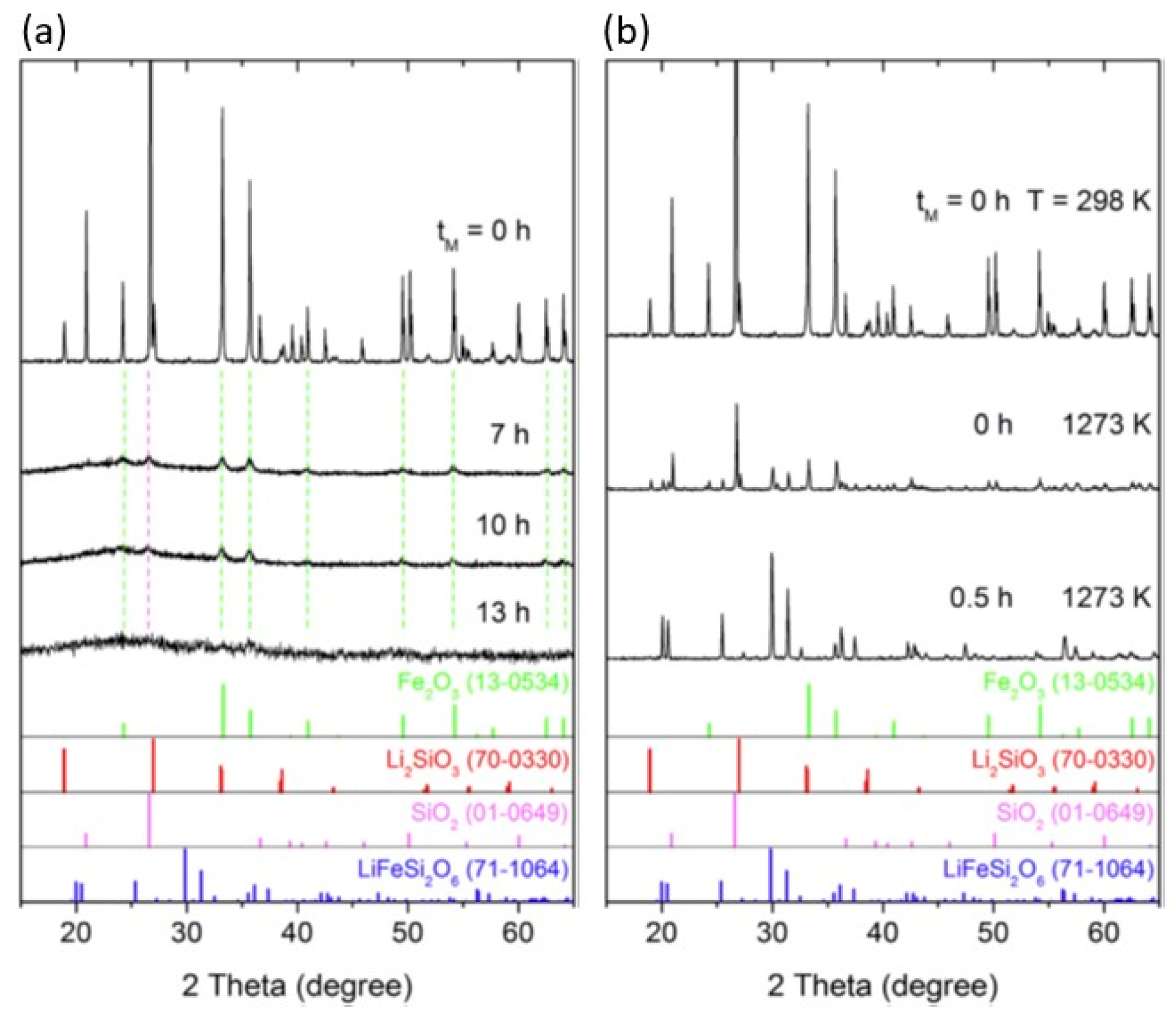

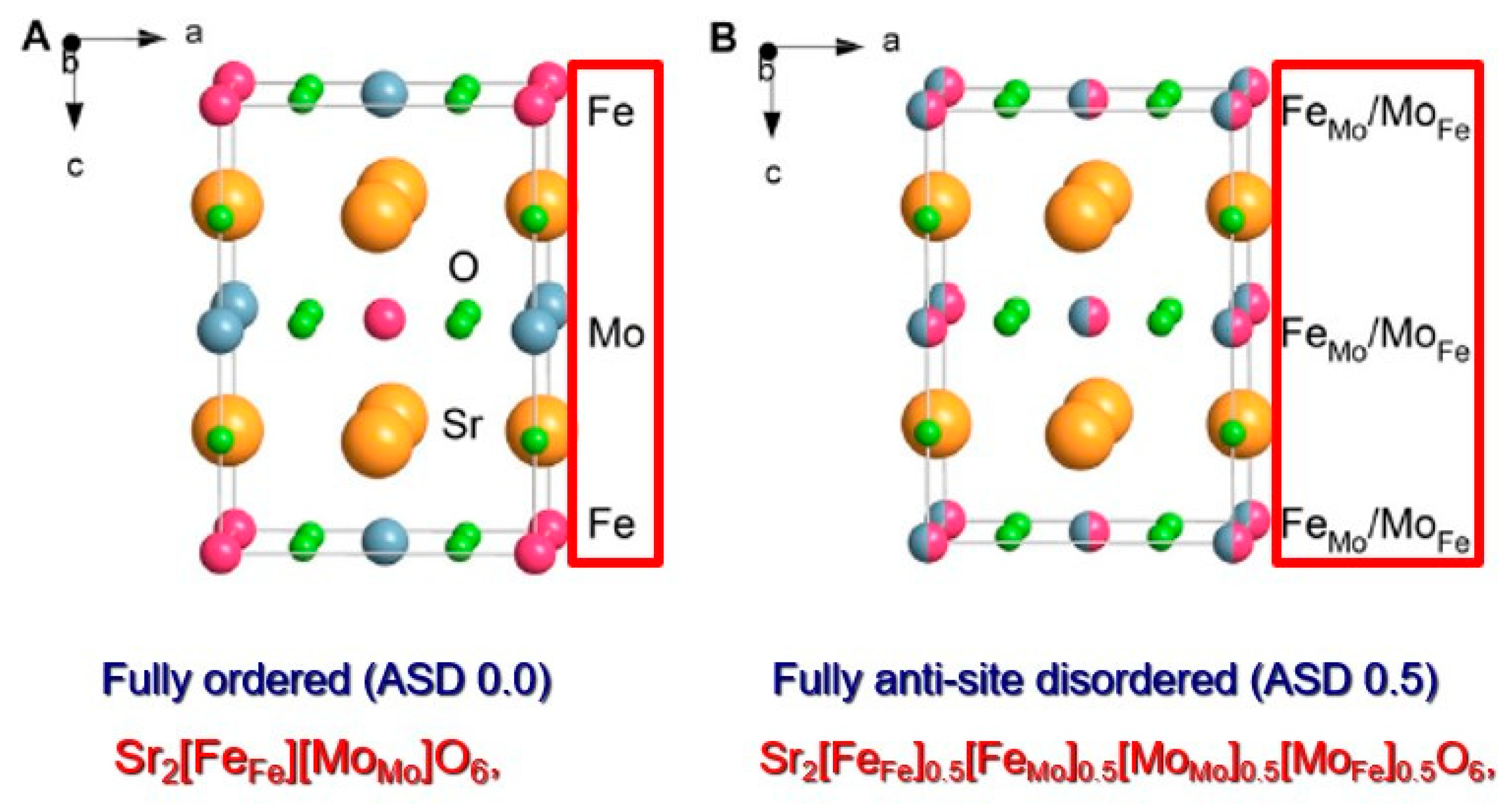
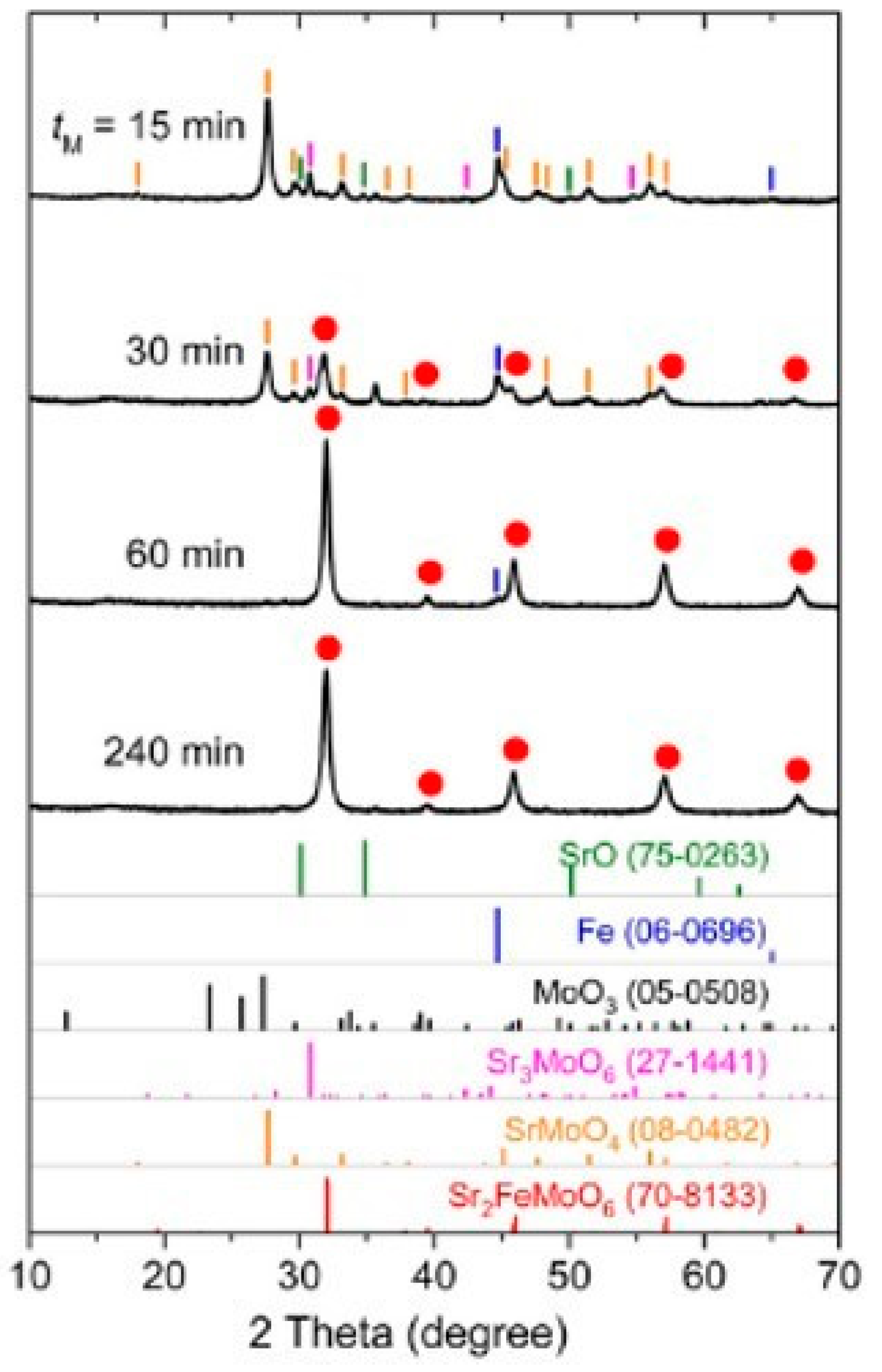

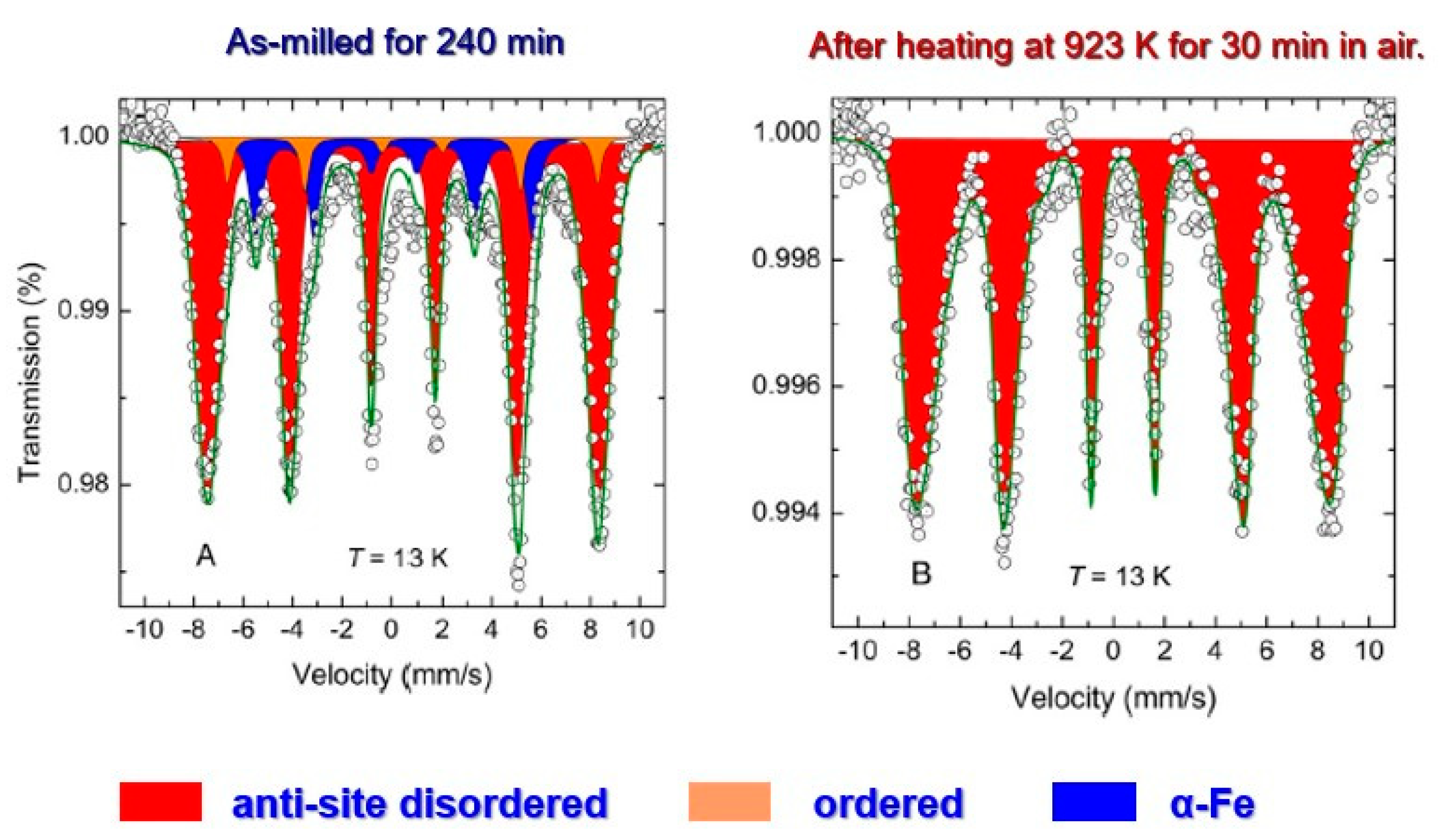
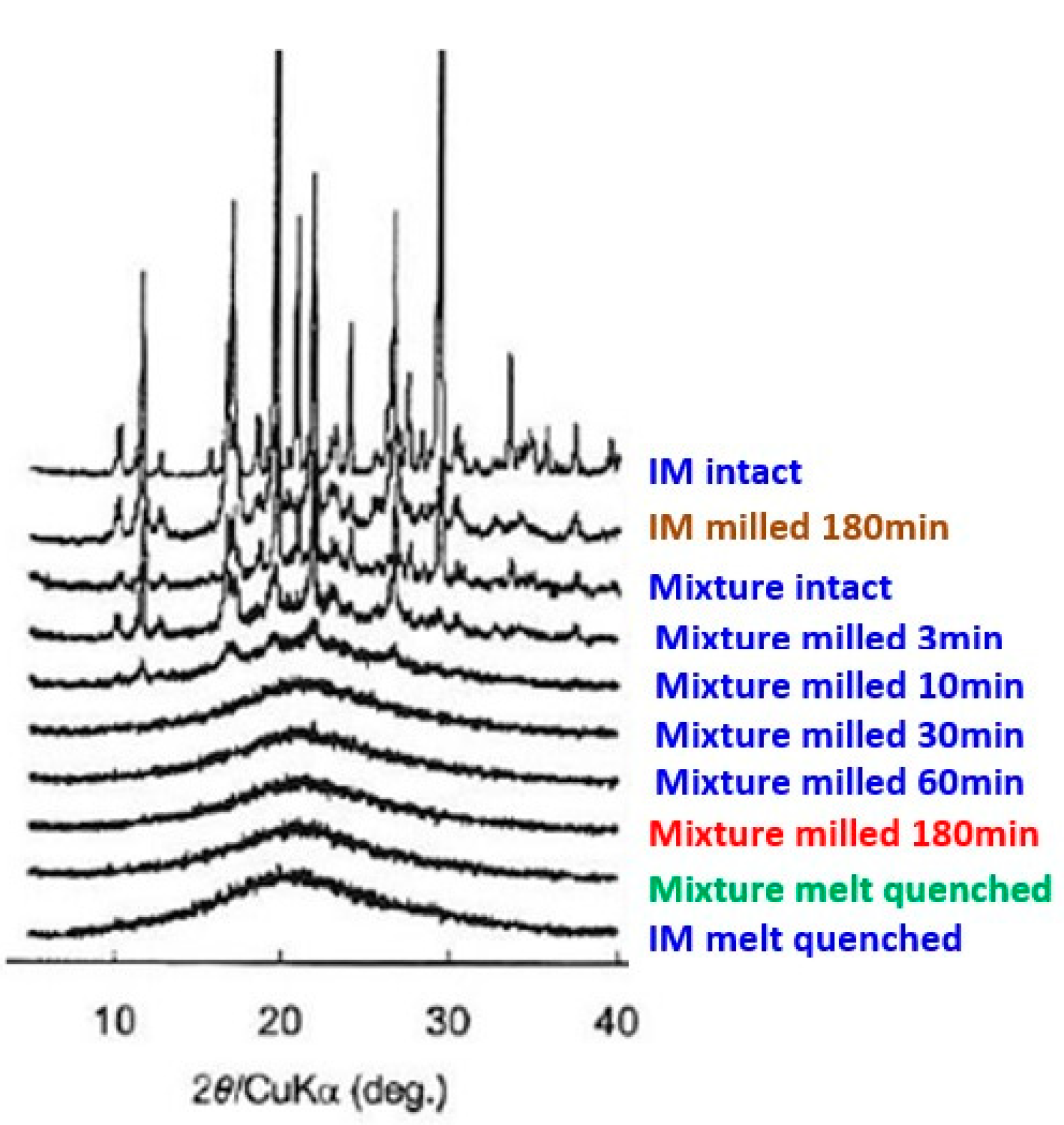

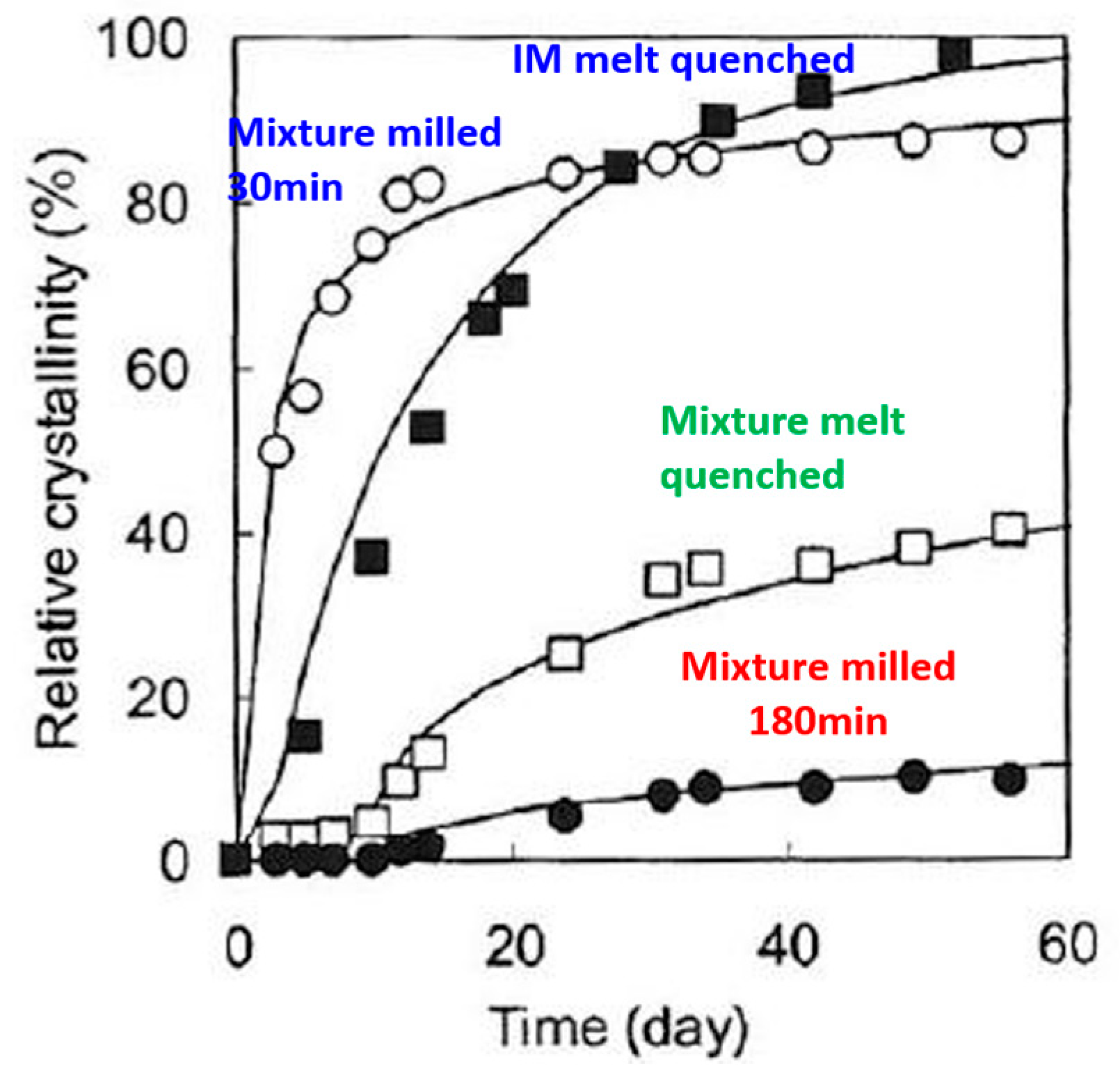
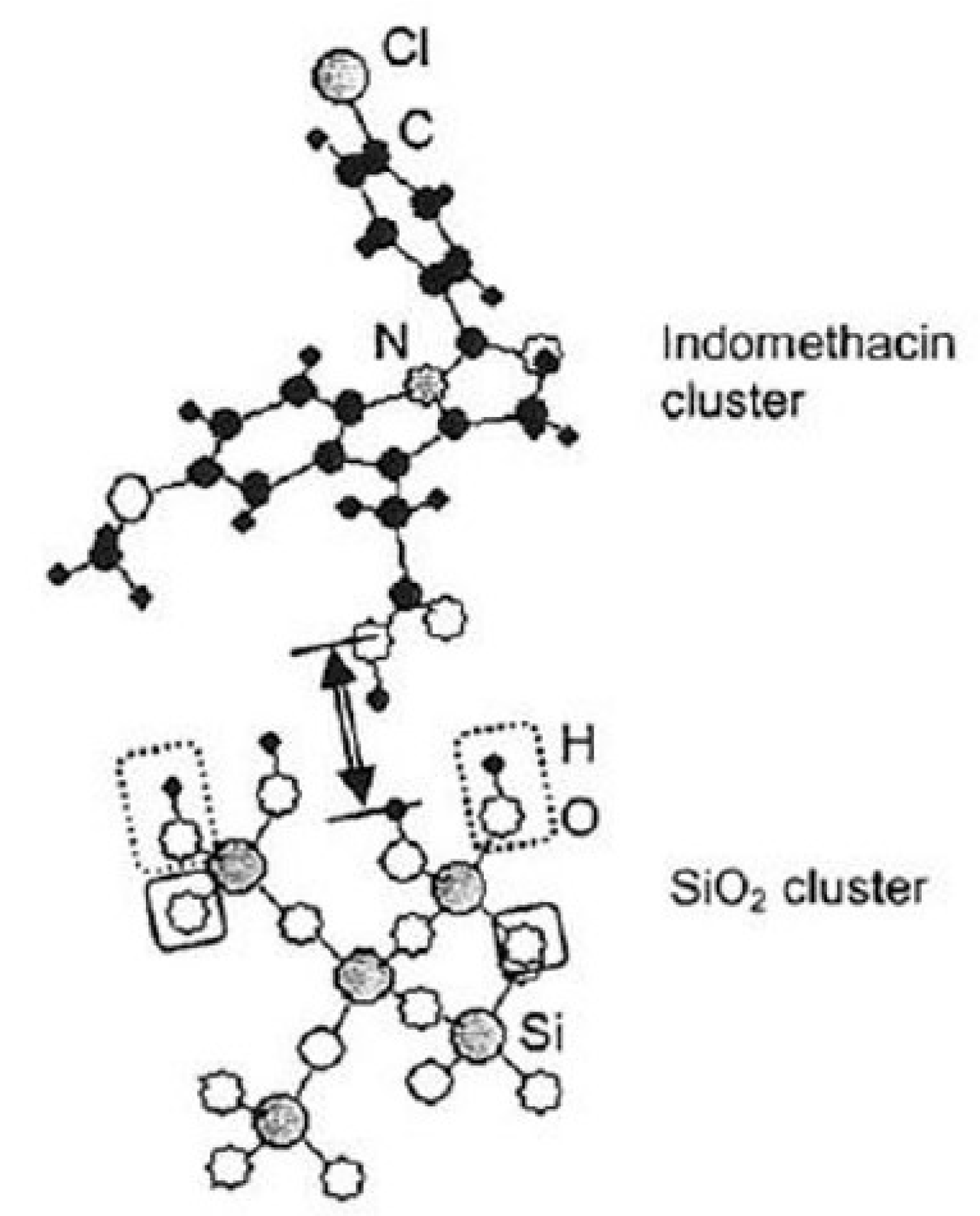

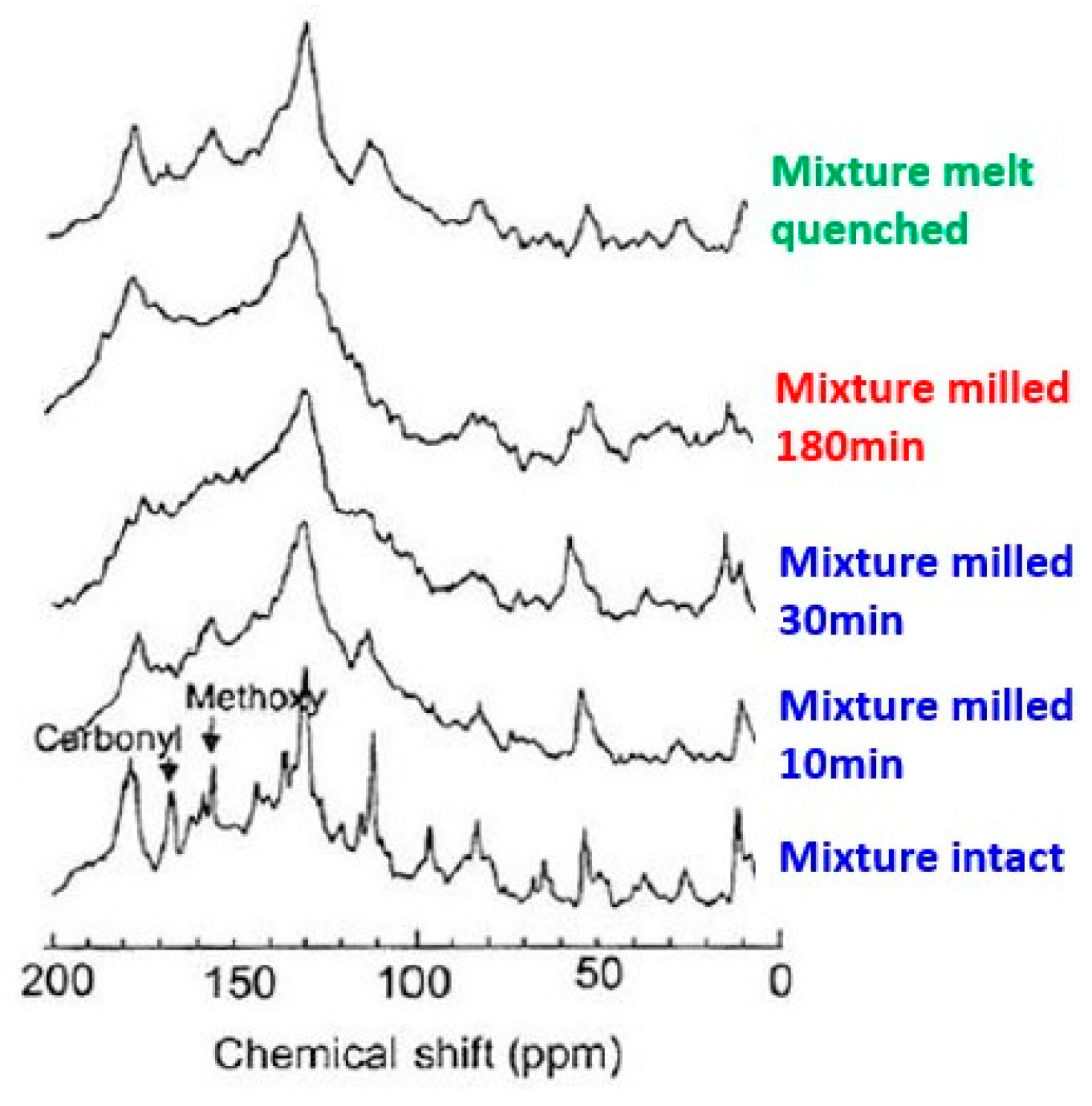
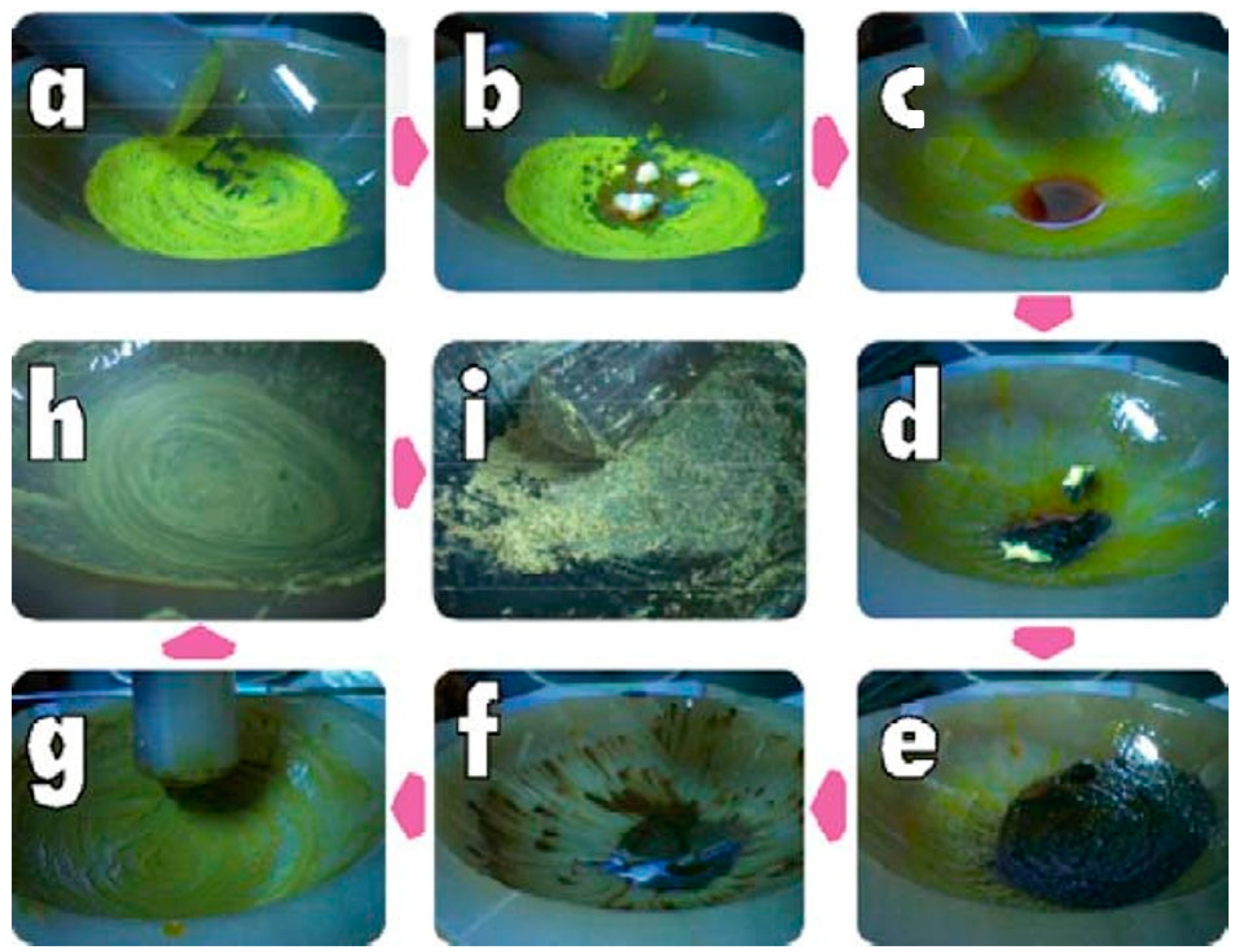
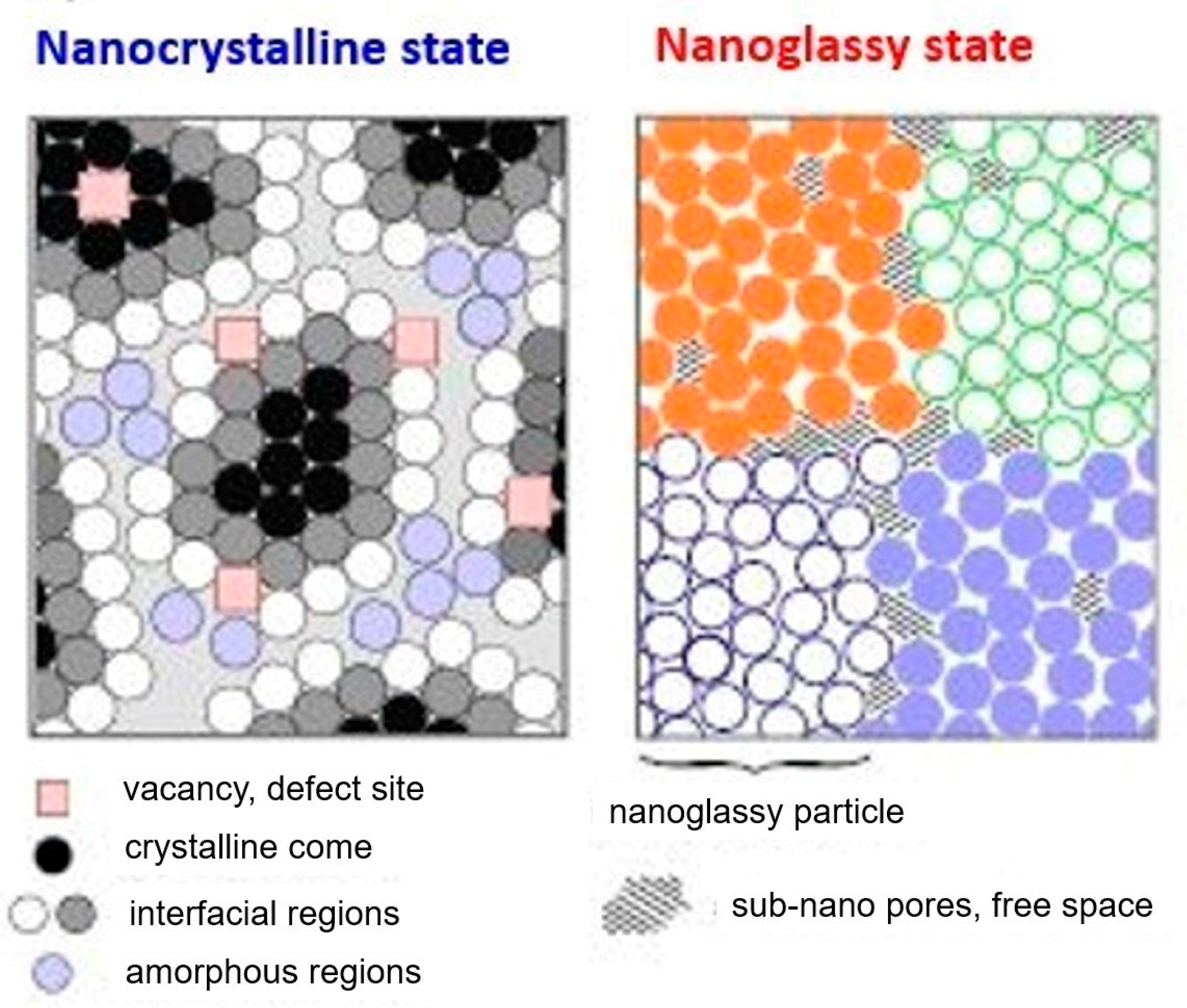

Disclaimer/Publisher’s Note: The statements, opinions and data contained in all publications are solely those of the individual author(s) and contributor(s) and not of MDPI and/or the editor(s). MDPI and/or the editor(s) disclaim responsibility for any injury to people or property resulting from any ideas, methods, instructions or products referred to in the content. |
© 2023 by the author. Licensee MDPI, Basel, Switzerland. This article is an open access article distributed under the terms and conditions of the Creative Commons Attribution (CC BY) license (https://creativecommons.org/licenses/by/4.0/).
Share and Cite
Senna, M. The Optimization of Mechanochemical Processes toward Functional Nanocomposite Materials. Powders 2023, 2, 659-677. https://doi.org/10.3390/powders2030041
Senna M. The Optimization of Mechanochemical Processes toward Functional Nanocomposite Materials. Powders. 2023; 2(3):659-677. https://doi.org/10.3390/powders2030041
Chicago/Turabian StyleSenna, Mamoru. 2023. "The Optimization of Mechanochemical Processes toward Functional Nanocomposite Materials" Powders 2, no. 3: 659-677. https://doi.org/10.3390/powders2030041




